Supplement Ingredient Guide: Creatine
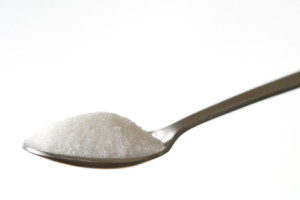
What is it?
Creatine is a nitrogenous organic acid that occurs naturally in vertebrates and helps to supply energy to all cells in the body, primarily muscle. This is achieved by increasing the formation of adenosine triphosphate (ATP) which the cells can then go on to use to produce energy used by the body. It is synthesised within the liver, kidneys and pancreas and secreted into blood for transport to muscle (amongst other) tissues. Its chemical name is methylguanido-acetic acid, formed from the amino acids arginine, methionine and glycine. Creatine comes in several forms such as creatine monohydrate, creatine ethyl-ester and Kre-Alkalyn which is a pH modified form of creatine which facilitates maximal uptake.
Indications
Creatine supplementation is recommended for anyone whom partakes in regular weightlifting exercises since it would help provide your muscle tissue with more energy to perform your routine. It’s also recommended for those looking to bulk since in high doses is increases the body’s water retention which consequently generates an increased body mass.
How much should I take?
First thing worth noting is, you should be using creatine monohydrate since it’s has been proven to be more effective for your body then the ethyl-ester form. The current debate relates to how Kre-Alkalyn would compare to the monohydrate form which we will look into later.
There is a lot of debate as to how creatine should be taken, whether a loading/maintenance cycle is needed or whether it should be a single constant dose throughout. An example of a loading/maintenance cycle would be:
Loading phase:
10g per day, as 2 x 5g servings for 5 days
5g per day, for 5 days
3g per day, for 7 days.
Maintenance phase:
2g per day, for 5 weeks.
However, if you opt to take a single constant dose, a good starting figure is 5g per day, every day.
To facilitate maximal uptake, creatine should be consumed with a simple carbohydrate, personally I found mixing it with an equal amount of sugar did the job well.
Research
The action of creatine on the muscle tissues is very well understood. Creatine, synthesized in the liver and kidney, is transported through the blood and taken up by tissues with high energy demands, such as the brain and skeletal muscle, through an active transport system. The concentration of ATP in skeletal muscle is usually 2-5 mM, which would result in a muscle contraction of only a few seconds. Fortunately, during times of increased energy demands, the phosphagen (or ATP/PCr) system rapidly resynthesizes ATP from ADP with the use of phosphocreatine (PCr) through a reversible reaction with the enzyme creatine kinase (CK). In skeletal muscle, PCr concentrations may reach 20-35 mM or more. Additionally, in most muscles, the ATP regeneration capacity of CK is very high and is therefore not a limiting factor. Through supplementing creatine this serves to increase the amount of ATP available for the muscle tissue to use allowing it to make you train more.
Side effects
Creatine has been shown in numerous studies to be, safe, even in large quantities, nevertheless there are some side effects of creatine which you need to be aware of before commencing its use. Due to its effect on fluid balance after consuming creatine it can cause mild irritation to the stomach and nausea for a short while. This is particularly apparent during the loading phase. Whilst this is a little unpleasant, it is harmless and minimised if you consume plenty of fluid. For this reason I also wouldn’t recommend you use creatine at times when you are prone to feeling a little sick, e.g. immediately after training or first thing when you wake up. Quite intense muscle cramps have been reported in many athletes who supplement with creatine, which could lead to injuries, and impair performance. Muscle cramps tend to be more prevalent in more energetic sports like athletics and football, rather than bodybuilding. Some users have reported headaches, but again, drinking plenty will help prevent this side effect. There have been reports of kidney damage following long-term supplementation of large quantities of creatine along with an increase the production of formaldehyde. However it’s generally safe to use over the long term in doses of up to 20g per day.
Refernces
AFSSA 1999. http://www.afssa.fr
Greenhaff PL; et al. 1993. Influence of oral creatine supplementation on muscle torque during repeated bouts of maximal voluntary exercise in men. Clin Sci 84: 565-571
Haussinger D. 1996. Nutritional state and swelling-induced inhibition of liver proteolysis in perfused rat liver. Nutr J 126: 395
Haussinger D. 1996. The role of cellular hydration in the regulation of cell function. Biochem J 313: 697-710
Hespel P, Op’t Eijnde B, Van Leemputte M. 2002. Opposite actions of caffeine and creatine on muscle relaxation time in humans. J Appl Physiol 92(2): 513-8.
Hultman E; et al. 1996. Muscle creatine loading in man. J Appl Physiol 81: 232-237
Kreider RB; et al. 1995. Effects of ingesting supplements designed to promote lean tissue accretion on whole and regional body composition alterations during resistance training. FASEB J: A1015
Kreider RB; et al. 1996. Effects of ingesting supplements designed to promote lean tissue accretion on body composition alterations during resistance training. Int J Sport Nutr 6(3): 234-246
Myers L. 2002. http://shop.store.yahoo.com/nu-care/prodres.html
Robinson TM; et al. 2000. Dietary creatine supplementation does not affect some haematological indices, or indices of muscle damage and hepatic and renal function. Br J Sports Med 34: 284-288
Stout JR; et al. 1997. The effects of a supplement designed to augment creatine uptake on anaerobic reserve capacity. NSCA National Conference Abstract
Stout JR; et al. 1997. The effects of a supplement designed to augment creatine uptake and fat-free mass in football players. ACSM Conference Abstract
Vandenberghe, K.; et al. 1996. Caffeine counteracts the ergogenic action of muscle creatine loading. J Appl Physiol 80(2): 452-457.
Wallimann, T; Wyss, M; Brdiczka, D; Nicolay, K; Eppenberger, HM. “Intracellular compartmentation, structure and function of creatine kinase isoenzymes in tissues with high and fluctuating energy demands: the ‘phosphocreatine circuit’ for cellular energy homeostasis”. The Biochemical journal 281 (Pt 1): 21–40. PMC 1130636. PMID 1731757.
http://articles.muscletalk.co.uk/article-creatine.aspx.
 Supplement Judge Unbiased Supplement Reviews – Do they really work??
Supplement Judge Unbiased Supplement Reviews – Do they really work??

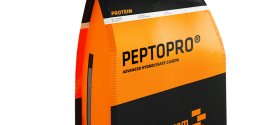
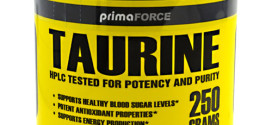
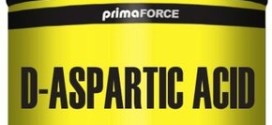
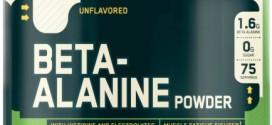
Hey Abdul,
Just had a read. Very nice article but I feel you could touch upon the following points:
– when do you take it? pre-work out or post.
– In terms of routine, I’ve heard 8 weeks on, 1 week off, and I’ve also heard 6 weeks on 6 weeks off, in addition to the continuous use
– also I’ve read before that it may have a negative feedback response on the body’s natural production of creatine leading to decreased natural production. Is there any evidence to support this?
[…] I’d recommend are whey protein, casein protein, multivitamin, BCAA, Waxy Maize Starch and creatine. For anyone looking to step it up a level higher I’d recommend fish oil, CLA, Glutamine and […]